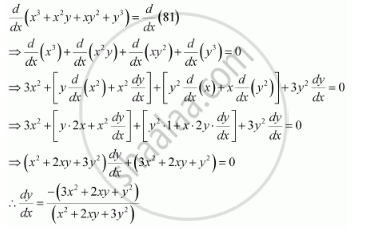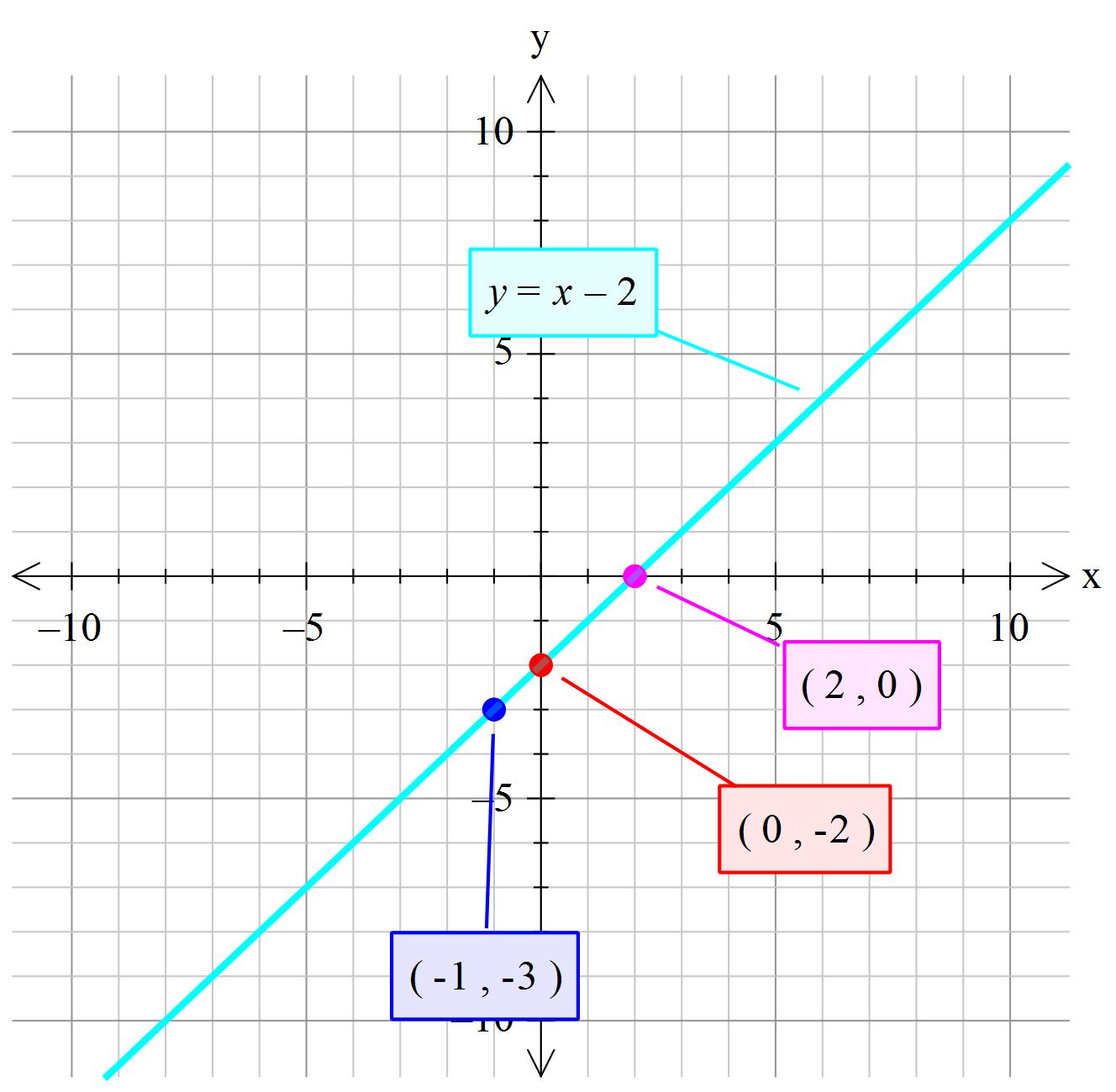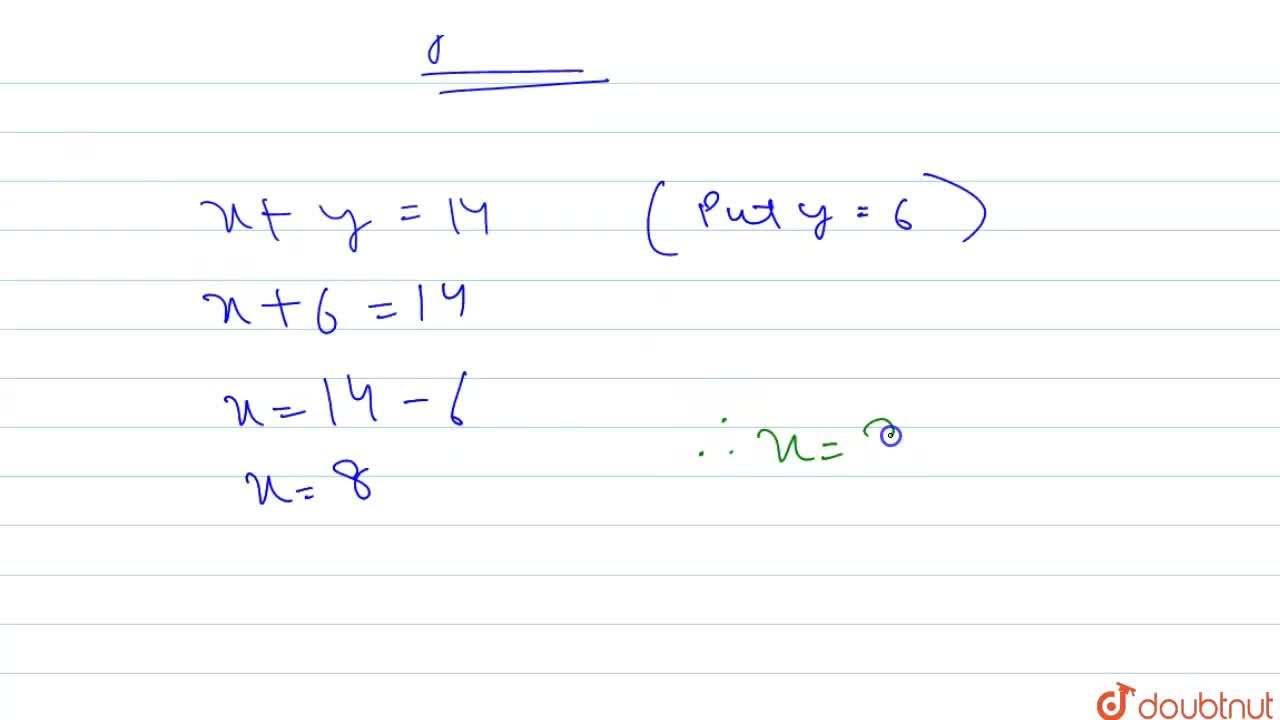
Find Dy Dx For X3 X2y Xy2 Y3 81 Mathematics Shaalaa Com
Y=x^21 (Graph Example), 4x2=2 (x6) (Solve Example) Algebra Calculator is a calculator that gives stepbystep help on algebra problems See More Examples » x3=5 1/3 1/4 y=x^21 Disclaimer This calculator is not perfect Please use at your own risk, and please alert us if something isn't working Thank youAnswer (1 of 114) If you want to make it work let's make it work We'll have to make ourselves a new algebraic structure to do so, but it's a small price for the Freshman's dream to come true As Wikipedia nicely states, A ring is a set R equipped with binary operations and satisfying
X y 2 4 differentiate
X y 2 4 differentiate-Click here👆to get an answer to your question ️ Simplify (x y) (2x y) (x 2y)(x y)Suppose the curves are x = y 2 and x = 4 y 2 and and you want to find points on the two curves with the same yvalue Then substitute y 2 from the first equation into the second to obtain x = 4 x So to achieve the same yvalue the xvalue on the second curve must be (minus) 4 times the xvalue on the first curve x = 4y 2 and x = y 2 I hope this helps, Penny

Solve The Following System Of Equations 27 X Y 15 X Y 2 And 30 X Y 1 X Y 3 Mathematics Topperlearning Com X68shsoo
2xy=2 Geometric figure Straight Line Slope = 4000/00 = 00 xintercept = 2/2 = 1 yintercept = 2/1 = 0000 Rearrange Rearrange the equation by subtracting what is to theThis is always true with real numbers, but not always for imaginary numbers We have ( x y) 2 = ( x y) ( x y) = x y x y = x x y y = x 2 × y 2 (xy)^2= (xy) (xy)=x {\color {#D61F06} {yx}} y=x {\color {#D61F06} {xy}}y=x^2 \times y^2\ _\square (xy)2 = (xy)(xy) = xyxy = xxyy = x2 ×y2 For noncommutative operators under some algebraic Or you can do it this way (x y)2= (x) (y)2= (x)2 2(x)(y) (y)2= x2 2xy y2 And yet another way to do it, if you want to use the (a b)2formula (x y)2= (x) y2= (x)2 2(x)(y) (y)2= x2 2xy y2 Upvote •1Downvote Comment •1 More Report Maxwell S
3,304 2 i think you dropped a sign somewhere, but i would go as follows x 2 y 2 = x 2 y 2 0 = x 2 y 2 ( (xy) (xy)) = x 2 xy xy y 2 but as I think Mark was pointing out, all the steps you took working from RHS to LHS are perfectly valid inShow activity on this post Unlike MathML, TeX's math mode makes no attempt to encode the semantics of the typeset math Math mode is susceptible to linebreaks, but you can use braces to prevent that the formula $ { (xy)^2}$ will not break across lines, while $ (xy)^2$ may Share Improve this answerDivide through by x^2y^2 Then we get, \frac{1}{y^2} \frac{1}{xy} \frac{1}{x^2} = 1 One of the denominators must be less than or equal to three x = 1 and y = 1 are ruled out Hence, xy = 2
X y 2 4 differentiateのギャラリー
各画像をクリックすると、ダウンロードまたは拡大表示できます
 Solution Sketch The Graph X Y 2 |  Solution Sketch The Graph X Y 2 | Solution Sketch The Graph X Y 2 |
 Solution Sketch The Graph X Y 2 |  Solution Sketch The Graph X Y 2 | Solution Sketch The Graph X Y 2 |
 Solution Sketch The Graph X Y 2 | Solution Sketch The Graph X Y 2 |  Solution Sketch The Graph X Y 2 |
 Solution Sketch The Graph X Y 2 |  Solution Sketch The Graph X Y 2 |  Solution Sketch The Graph X Y 2 |
 Solution Sketch The Graph X Y 2 |  Solution Sketch The Graph X Y 2 |  Solution Sketch The Graph X Y 2 |
 Solution Sketch The Graph X Y 2 |  Solution Sketch The Graph X Y 2 | Solution Sketch The Graph X Y 2 |
Solution Sketch The Graph X Y 2 |  Solution Sketch The Graph X Y 2 |  Solution Sketch The Graph X Y 2 |
 Solution Sketch The Graph X Y 2 | Solution Sketch The Graph X Y 2 |  Solution Sketch The Graph X Y 2 |
 Solution Sketch The Graph X Y 2 | Solution Sketch The Graph X Y 2 |  Solution Sketch The Graph X Y 2 |
Solution Sketch The Graph X Y 2 | Solution Sketch The Graph X Y 2 | Solution Sketch The Graph X Y 2 |
 Solution Sketch The Graph X Y 2 | Solution Sketch The Graph X Y 2 | Solution Sketch The Graph X Y 2 |
Solution Sketch The Graph X Y 2 |  Solution Sketch The Graph X Y 2 |  Solution Sketch The Graph X Y 2 |
 Solution Sketch The Graph X Y 2 |  Solution Sketch The Graph X Y 2 |  Solution Sketch The Graph X Y 2 |
 Solution Sketch The Graph X Y 2 |  Solution Sketch The Graph X Y 2 |  Solution Sketch The Graph X Y 2 |
 Solution Sketch The Graph X Y 2 |  Solution Sketch The Graph X Y 2 |  Solution Sketch The Graph X Y 2 |
 Solution Sketch The Graph X Y 2 |  Solution Sketch The Graph X Y 2 |  Solution Sketch The Graph X Y 2 |
 Solution Sketch The Graph X Y 2 |  Solution Sketch The Graph X Y 2 |  Solution Sketch The Graph X Y 2 |
 Solution Sketch The Graph X Y 2 |  Solution Sketch The Graph X Y 2 |  Solution Sketch The Graph X Y 2 |
 Solution Sketch The Graph X Y 2 | Solution Sketch The Graph X Y 2 |  Solution Sketch The Graph X Y 2 |
 Solution Sketch The Graph X Y 2 | Solution Sketch The Graph X Y 2 |  Solution Sketch The Graph X Y 2 |
 Solution Sketch The Graph X Y 2 |  Solution Sketch The Graph X Y 2 |  Solution Sketch The Graph X Y 2 |
 Solution Sketch The Graph X Y 2 |  Solution Sketch The Graph X Y 2 |  Solution Sketch The Graph X Y 2 |
 Solution Sketch The Graph X Y 2 |  Solution Sketch The Graph X Y 2 |  Solution Sketch The Graph X Y 2 |
 Solution Sketch The Graph X Y 2 |  Solution Sketch The Graph X Y 2 |  Solution Sketch The Graph X Y 2 |
 Solution Sketch The Graph X Y 2 |  Solution Sketch The Graph X Y 2 |  Solution Sketch The Graph X Y 2 |
 Solution Sketch The Graph X Y 2 | Solution Sketch The Graph X Y 2 |  Solution Sketch The Graph X Y 2 |
 Solution Sketch The Graph X Y 2 |  Solution Sketch The Graph X Y 2 |  Solution Sketch The Graph X Y 2 |
 Solution Sketch The Graph X Y 2 |  Solution Sketch The Graph X Y 2 | Solution Sketch The Graph X Y 2 |
 Solution Sketch The Graph X Y 2 |  Solution Sketch The Graph X Y 2 |  Solution Sketch The Graph X Y 2 |
 Solution Sketch The Graph X Y 2 | Solution Sketch The Graph X Y 2 |  Solution Sketch The Graph X Y 2 |
Solution Sketch The Graph X Y 2 |  Solution Sketch The Graph X Y 2 |  Solution Sketch The Graph X Y 2 |
 Solution Sketch The Graph X Y 2 | Solution Sketch The Graph X Y 2 |  Solution Sketch The Graph X Y 2 |
Solution Sketch The Graph X Y 2 |  Solution Sketch The Graph X Y 2 |  Solution Sketch The Graph X Y 2 |
 Solution Sketch The Graph X Y 2 |
The factors are (xy)(xy) or (xy)^2 We need to factor the trinomial x^22xyy^2 The factors of x^2 = (x)(x) The factors of y^2 = (y)(y) Since the second sign is positive we are adding the factors meaning the signs of the factors need to be the same Since the first sign is negative both signs must be negative True is only for x = y = 0, for rest numbers the given statement is false So the answer is "false" For example, if x = 1 and y = 2 (1 2) 2 ≠ 1 2 2 2 3 2 ≠ 5
Incoming Term: x y 2014, x y 2, x y 2 4 4 2 6 one and one-third 8 1 10 four-fifths inverse variation linear logarithmic quadratic, x y 2xy 4y x 2ln x, x y 2 graph, x y 2 4 differentiate, (x-y)^2 formula, x+y=20, (x+y)2 answer, x/y=2/3,




0 件のコメント:
コメントを投稿